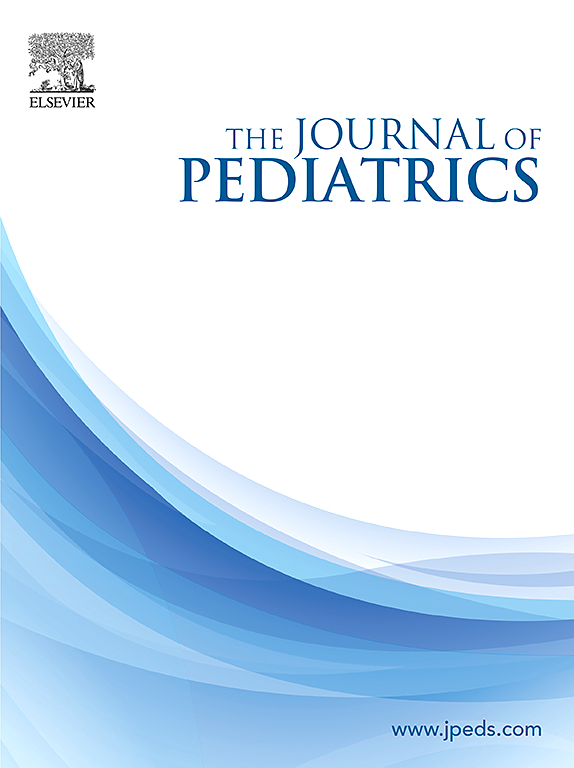Nasopharyngeal Prongs versus RAM Cannula for Delivering Noninvasive Positive Pressure Ventilation: An Open-Label, Randomized Controlled Trial
IF 3.5
2区 医学
Q1 PEDIATRICS
引用次数: 0
Abstract
Objective
To compare the efficacy of nasopharyngeal (NP) prongs and RAM cannula in preventing the need for invasive ventilation among preterm neonates receiving noninvasive positive pressure ventilation (NIPPV).
Study design
This was an open-label, randomized controlled trial conducted in the neonatal intensive care unit of a tertiary care hospital in India. A total of 150 neonates born at 280/7 to 366/7 weeks of gestation who required NIPPV were randomized to receive NIPPV via either NP prongs or a RAM cannula. Randomization was stratified by gestation at birth and timing of support (primary or postextubation). The primary outcome was the proportion of neonates requiring invasive ventilation within 72 hours of randomization. Secondary outcomes included the need for invasive ventilation from 72 hours to 7 days after NIPPV initiation, as well as the incidence of nasal trauma.
Results
Baseline characteristics, including birth weight, gestational age, and respiratory morbidities, were comparable between groups. Invasive ventilation within 72 hours of NIPPV initiation was required in 33% of neonates in the NP prongs group and 28% in the RAM cannula group (relative risk: 1.17, 95% CI: 0.72-1.89; P = .44). No significant interaction was observed between the primary outcome and the stratification variables. The incidence and severity of nasal injury, duration of respiratory support, and other secondary outcomes were also similar across groups.
Conclusions
Among preterm neonates receiving NIPPV, NP prongs and a RAM cannula showed comparable efficacy in preventing the need for invasive ventilation. Further research is warranted to confirm these findings in larger and more diverse populations.
Trial registration
Clinical Trial Registry of India (CTRI/2023/07/055835).
鼻咽叉管与RAM插管进行无创正压通气:一项开放标签、随机对照试验临床试验注册- (CTRI/2023/07/055835)。
目的:比较鼻咽针(NP)和RAM套管在预防接受无创正压通气(NIPPV)的早产儿需要有创通气的效果。研究设计:这是一项开放标签、随机对照试验,在印度一家三级医院的新生儿重症监护室进行。共有150名在妊娠280/7至366/7周出生的需要NIPPV的新生儿通过NP钳或RAM插管随机接受NIPPV。随机分组根据出生时的妊娠和支持时间(初次或拔管后)进行分层。主要结局是在随机分组的72小时内需要有创通气的新生儿比例。次要结局包括NIPPV启动后72小时至7天的有创通气需求,以及鼻外伤的发生率。结果:基线特征,包括出生体重、胎龄和呼吸系统疾病,组间具有可比性。在NIPPV启动后的72小时内,33%的NP尖头组新生儿需要有创通气,28%的RAM套管组新生儿需要有创通气(RR 1.17, 95% CI 0.72-1.89;p = 0.44)。在主要结局和分层变量之间没有观察到显著的相互作用。鼻部损伤的发生率和严重程度、呼吸支持持续时间和其他次要结局在各组间也相似。结论:在接受NIPPV的早产儿中,NP尖头和RAM插管在防止需要有创通气方面的效果相当。为了在更大、更多样化的人群中证实这些发现,有必要进行进一步的研究。
本文章由计算机程序翻译,如有差异,请以英文原文为准。
求助全文
约1分钟内获得全文
求助全文
来源期刊

Journal of Pediatrics
医学-小儿科
CiteScore
6.00
自引率
2.00%
发文量
696
审稿时长
31 days
期刊介绍:
The Journal of Pediatrics is an international peer-reviewed journal that advances pediatric research and serves as a practical guide for pediatricians who manage health and diagnose and treat disorders in infants, children, and adolescents. The Journal publishes original work based on standards of excellence and expert review. The Journal seeks to publish high quality original articles that are immediately applicable to practice (basic science, translational research, evidence-based medicine), brief clinical and laboratory case reports, medical progress, expert commentary, grand rounds, insightful editorials, “classic” physical examinations, and novel insights into clinical and academic pediatric medicine related to every aspect of child health. Published monthly since 1932, The Journal of Pediatrics continues to promote the latest developments in pediatric medicine, child health, policy, and advocacy.
Topics covered in The Journal of Pediatrics include, but are not limited to:
General Pediatrics
Pediatric Subspecialties
Adolescent Medicine
Allergy and Immunology
Cardiology
Critical Care Medicine
Developmental-Behavioral Medicine
Endocrinology
Gastroenterology
Hematology-Oncology
Infectious Diseases
Neonatal-Perinatal Medicine
Nephrology
Neurology
Emergency Medicine
Pulmonology
Rheumatology
Genetics
Ethics
Health Service Research
Pediatric Hospitalist Medicine.
 求助内容:
求助内容: 应助结果提醒方式:
应助结果提醒方式:


